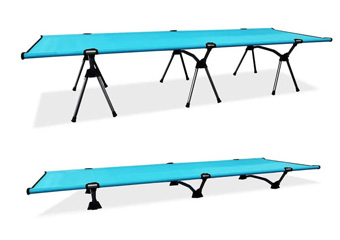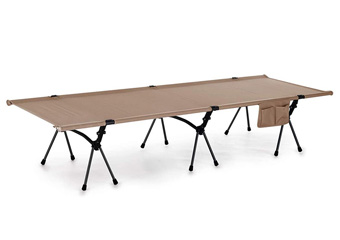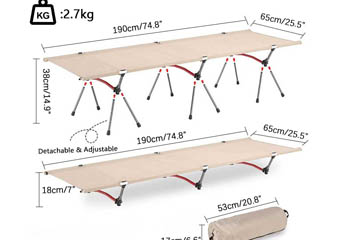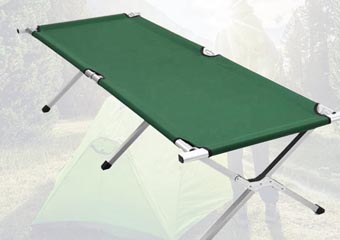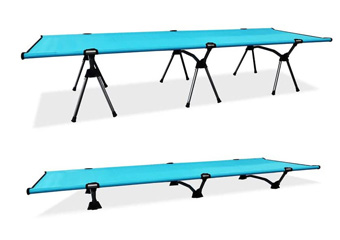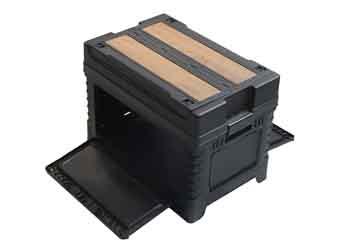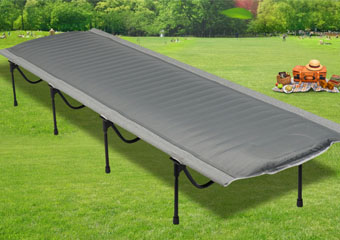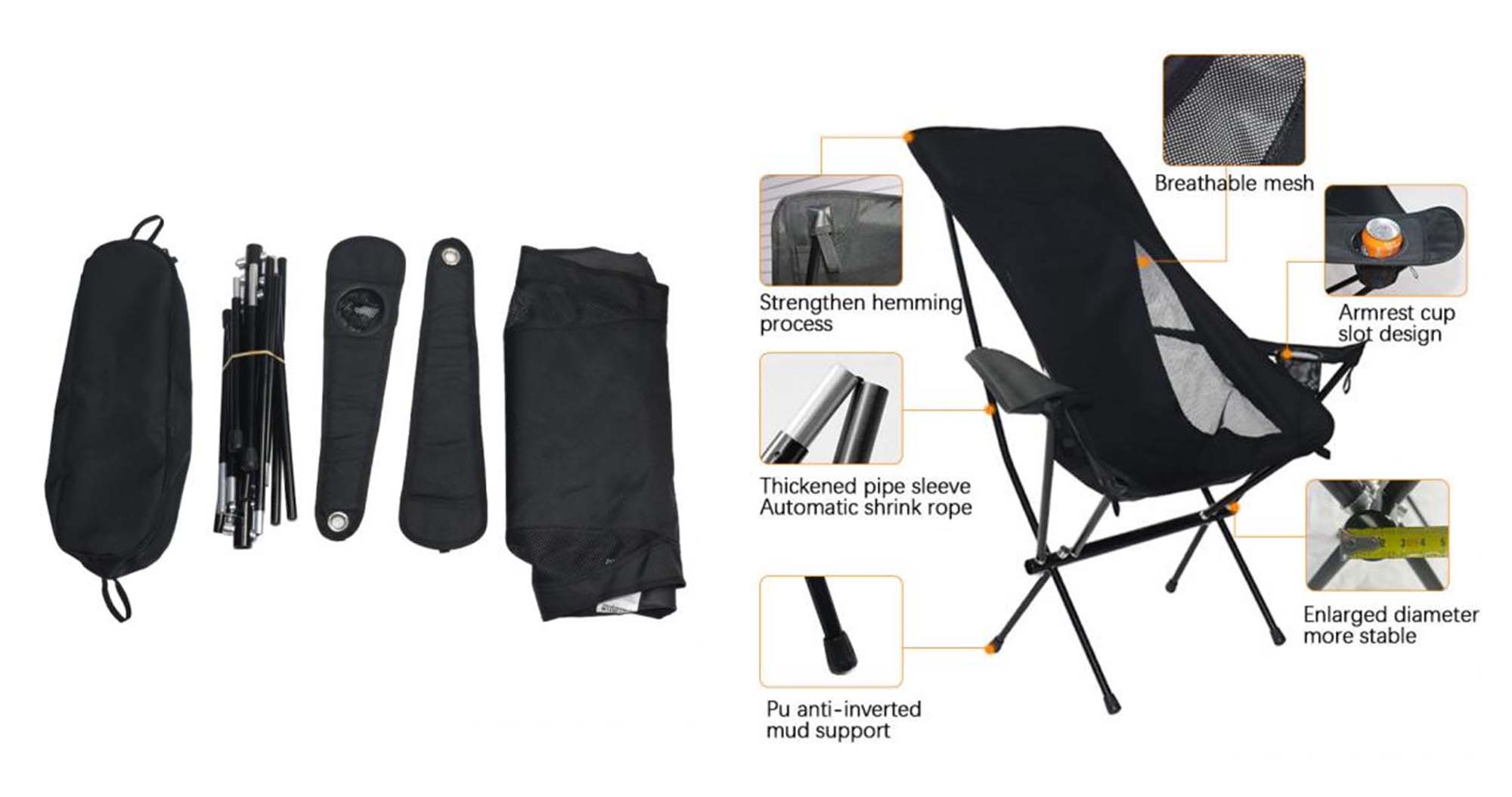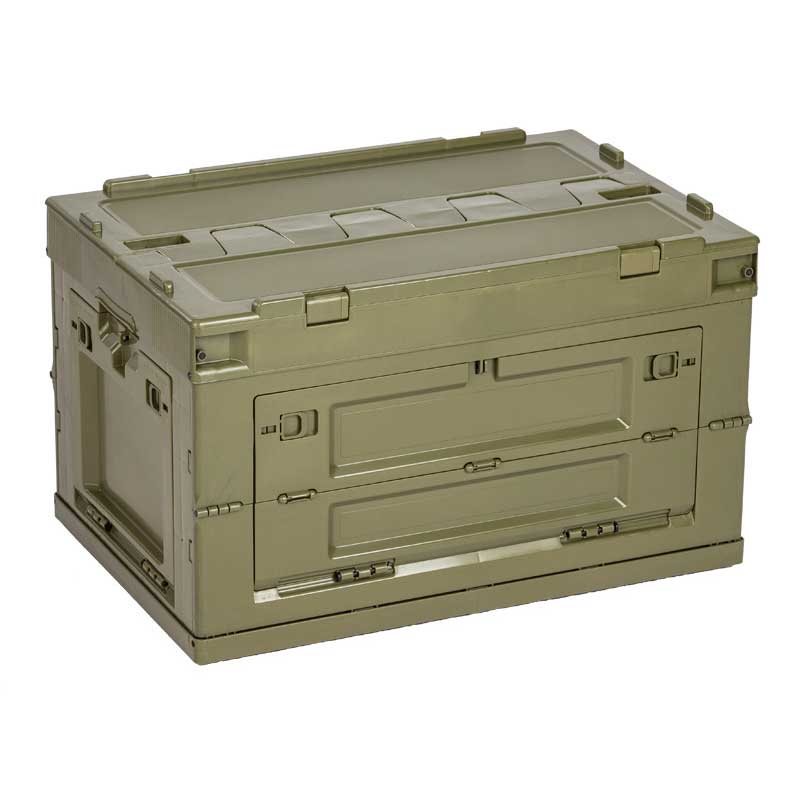Camping bed is one of the essential tools for outdoor camping, and a good camping bed can provide good support and comfort. If you want to purchase a folding bed in the near future, you may refer to the following information.
1. Camping beds in mountainous areas
Mountain camping beds are mainly suitable for activities such as mountaineering, hiking, and wilderness exploration, with the main characteristics of being lightweight, simple in structure, and easy to carry and assemble. This type of camping bed is often made of aluminum alloy material, which is lightweight, easy to fold, and easy to carry. After disassembly, it can be put into a backpack without taking up a lot of space. At the same time, this camping bed also has strong breathability and sweat wicking ability, making it safer to use in high-altitude environments.
2. Beach Camping Bed
Beach camping beds are mainly suitable for camping activities in humid environments such as beaches and coasts, characterized by moisture resistance, waterproofing, corrosion resistance, heat resistance, sun protection, and breathability. This type of camping bed often uses plastic or mesh materials to avoid moisture damage to the bed frame, while also avoiding mosquito bites and improving night comfort. It has the characteristics of fast assembly, easy portability, good breathability, and strong adaptability.
3. Forest Camping Bed
The forest camping bed is particularly suitable for humid forest environments, using a bed tent combination style to prevent mosquito bites and moisture. At the same time, this camping bed also has the characteristics of good breathability, easy portability, easy assembly, durability, and is easy to clean and care for, with a service life of more than 3 years.
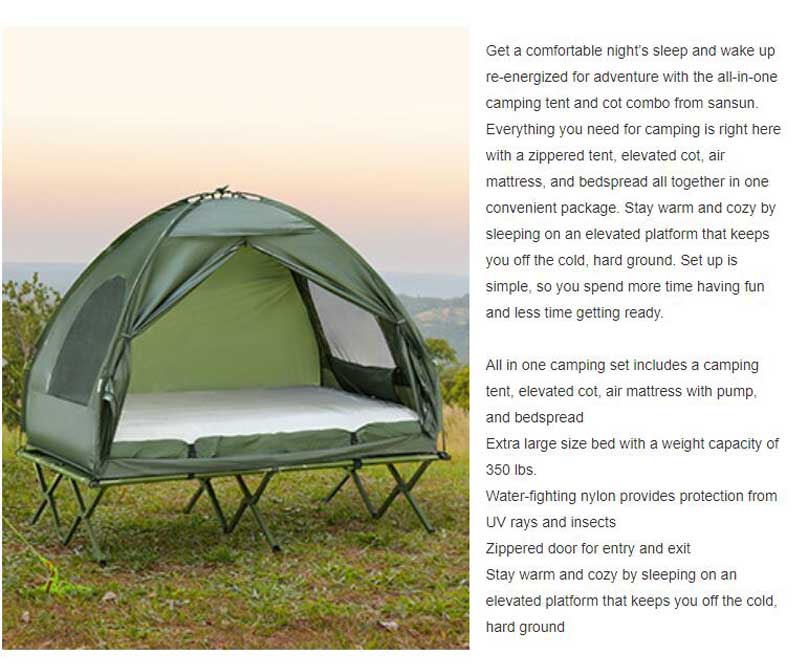
Classification of materials for outdoor camping beds:
1. Steel camping bed
The steel camping bed is made of metal materials such as steel pipes, with strong compression resistance, and is suitable for large-scale outdoor camping activities and large-scale tents built in the wild. Due to its sturdy material, this camping bed is relatively heavy and not easy to carry. But the price is cheap, and large-scale procurement of steel camping beds has always been the first choice for charitable organizations and large institutions to do activities.
2. Aluminum alloy camping bed
The aluminum alloy camping bed is made of aluminum alloy material, which is lightweight and foldable, suitable for outdoor activities such as hiking, hiking, fishing, etc. It has the characteristics of moisture resistance, wind resistance, UV protection, and rust resistance, and can also be used in high altitude and extreme temperature environments. The preferred material for individual mountain camping enthusiasts is aluminum alloy camping bed, which is lightweight, easy to carry, and feels good to use.
